The SB120 is a new model in Yeti's range, introduced recently as part of a draft of three new models, the SB120, SB140 and SB160.
As the name suggests, this mountain bike has 120mm of rear-wheel travel, but don't mention 'downcountry' in its presence – with 130mm forks and a relatively burly build, it's very much a short-travel trail bike.
The T1 model I tested is the cheapest in the SB120 Turq range, which see a higher-grade carbon and updated Switch Infinity link hardware compared to the (slightly) more pocket-friendly C-Series bikes.
The big news with the new SB120, other than the introduction of a 120mm platform, is the evolution of Yeti's approach to geometry.
All the new bikes feature a shape that's up to date – longer reaches, slacker head angles and steeper seat angles.
The frames also benefit from a sleeker silhouette, with more ground clearance at the belly of the bike and around the rear triangle.
Yeti SB120 T1 frame and suspension details
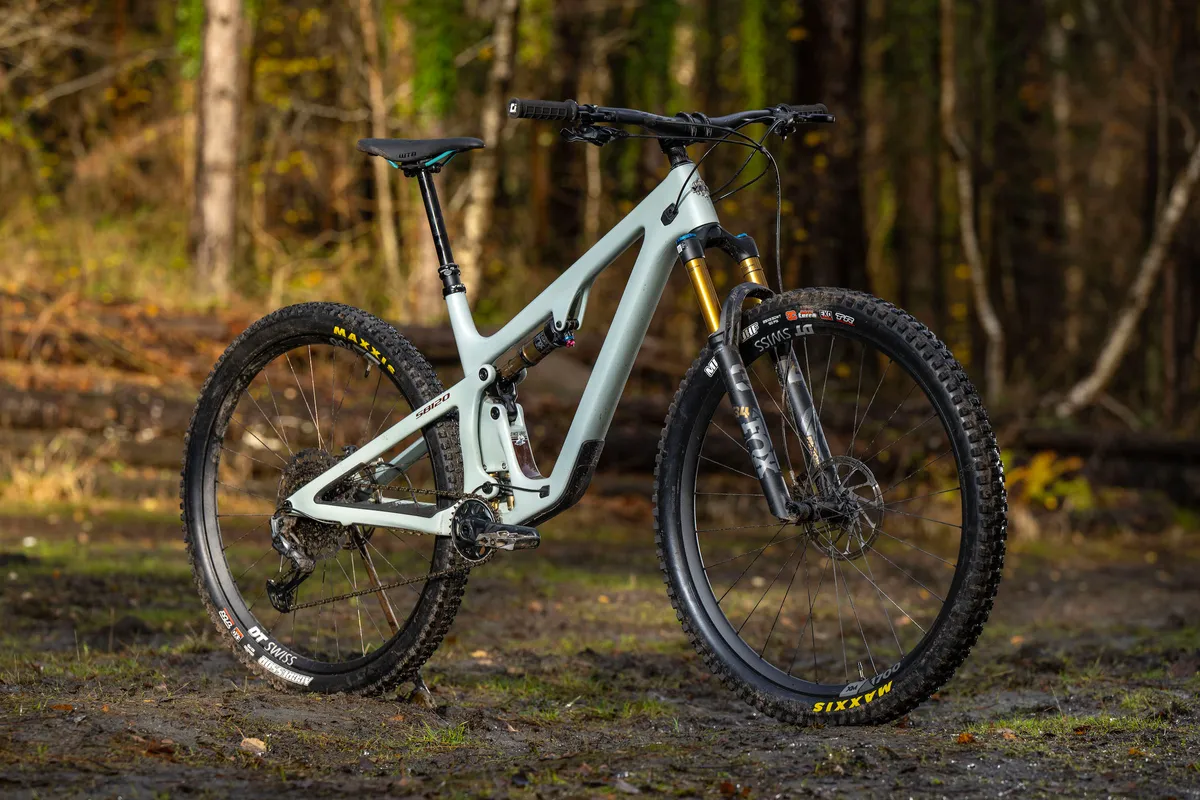
The Turq-series carbon, used here in the front and rear triangles of the SB120 T1 is of a higher modulus than that found in the C-Series bikes, giving a better strength or stiffness-to-weight ratio.
Yeti says the frames use some of the highest-quality carbon fibre around, and the construction of the frame has been designed to give the best blend of stiffness and compliance.
The Turq carbon contributes to a saving of around 225g over the C-Series carbon according to Yeti.
From a rider's point of view, the SB120 ticks a lot of frame-feature boxes. There's room (on my size-large bike) for a decent-sized bottle in the frame, while clamped hose entry and exits have kept the bike rattle-free during testing. The cables and hoses are guided close to the main pivot, reducing the suspension's ability to tug on them.
The seat tube has been designed to ensure long-travel dropper posts can be used on even the smallest sizes.
The broad down tube protector can be replaced, if needed, and gives access to internal cable routing too.

I like the threaded bottom bracket shell that's integrated into the carbon layup in a way that's designed to prevent creaking down the line. Likewise the ISCG05 mounts, should you wish to add a chain guide or bash guard.
The rear triangle receives ample rubberised protection from chain slap, looping onto the underside of the seatstay, contributing to a quiet ride out on the trail.
Yeti SB120 T1 Switch Infinity

At the heart of Yeti's frames is the Switch Infinity suspension linkage.
The rear triangle is a single item, with no pivots interrupting it. It rotates on a single main pivot, located low in the frame, which itself sits on a shuttle. This shuttle is able to move up and down on a pair of stanchions, and does so as the bike's suspension compresses.
This, Yeti says, gives them better control over the suspension's interactions with pedalling and braking forces.
The top of the rear triangle pushes on a newly designed link that drives the shock, which sits horizontally under the top tube. This is said to improve water bottle clearance, reduce the standover height and optimise the leverage ratio.

Overall, there's 11 per cent progression in the suspension system.
The stanchions in the Switch Infinity Link are made for Yeti by Fox, and feature the suspension brand's tell-tale golden Kashima coating. A grease port in the shuttle keeps the whole system lubricated and, theoretically, more wear-resistant.
Yeti SB120 T1 geometry
Yeti has given the SB120 relatively contemporary geometry, with a long front end and size-specific rear chainstay lengths to boot.
The size-large bike I tested has a 475mm reach, paired with a 66.5-degree head angle. Chainstays range from 433mm to 443mm, with the additional length maintaining proportionality across the sizes, according to Yeti.
The effective seat angle is 76.5 degrees.
| | XS | S | M | L | XL | XXL |
|---|---|---|---|---|---|---|
| Seat tube length (mm) | 345 | 365 | 400 | 440 | 470 | 485 |
| Effective top tube length (mm) | 540 | 571 | 603 | 625 | 652 | 672 |
| Head tube angle (degrees) | 66.5 | 66.5 | 66.5 | 66.5 | 66.5 | 66.5 |
| Effective seat tube angle (degrees) | 76.5 | 76.5 | 76.5 | 76.5 | 76.5 | 76.5 |
| Actual seat tube angle (degrees) | 71.1 | 71.5 | 71.9 | 72.3 | 72.7 | 73.2 |
| Chainstay length (mm) | 433 | 435 | 437 | 439 | 441 | 443 |
| Wheelbase (mm) | 1,122 | 1,157 | 1,191 | 1,217 | 1,249 | 1,274 |
| Estimated BB height (mm) | 335 | 335 | 335 | 335 | 335 | 335 |
| Standover (mm) | 699 | 709 | 714 | 718 | 720 | 725 |
| Head tube length (mm) | 92 | 98 | 104 | 115 | 126 | 147 |
| Stack (mm) | 604 | 610 | 615 | 625 | 635 | 655 |
| Reach (mm) | 395 | 425 | 455 | 475 | 500 | 515 |
| Front center (mm) | 689 | 722 | 754 | 778 | 808 | 831 |
Yeti SB120 T1 specification
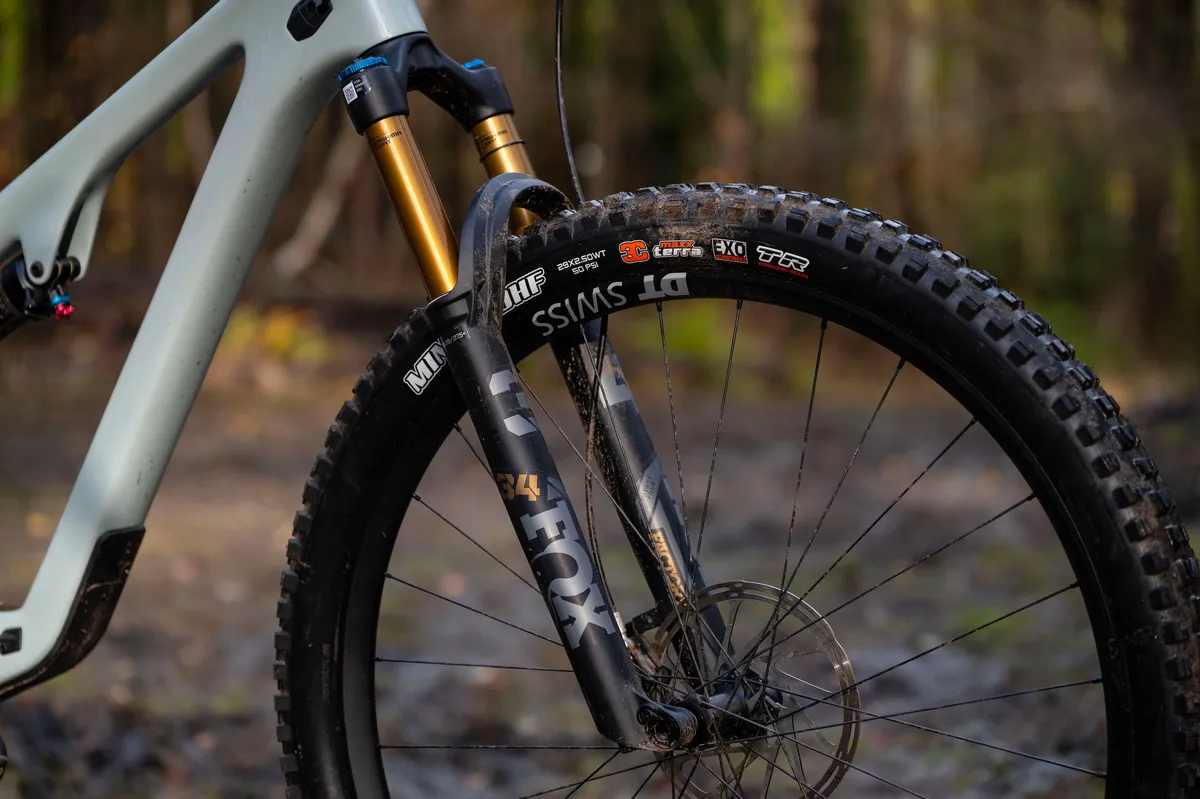
The T1 model receives a solid spec list that performs well on the trail. While there are some aspects of the spec I would like to see improved, there's nothing on there that sticks out like a sore thumb when you jump on the bike, and there are a couple of highlights, too.
However, as a premium brand, it doesn’t represent brilliant value for money.
Suspension comes from Fox, with a Float DPS shock and 34 fork dolling out their travel. Both ends are Factory-level, featuring the slippery Kashima coating on their stanchions.
The fork features a GRIP2 damper – it's the first generation of the 34 to feature this more complex damper, which offers high- and low-speed compression and rebound adjustment.

The shock's compression dial has three positions, with the Open mode offering three levels of adjustment too.
SRAM's mechanical GX Eagle drivetrain features, though there's a fancier X01 derailleur at the rear.
It's paired with SRAM's G2 RSC brakes with 180mm rotors at each end.
DT Swiss' XM1700 aluminium wheels have a broad 30mm-wide rim, though the freehub engagement angle isn't the snappiest. They're wrapped in EXO-cased Maxxis tyres - a Minion DHF at the front and an Aggressor at the rear.

The finishing kit comes from a smattering of brands – ODI for the grips and WTB the saddle, while Fox supplies the dropper, Yeti uses its own bars and there's a Burgtec stem.
Yeti SB120 T1 ride impressions

I've been testing the SB120 on my home turf for a couple of weeks. Terrain has varied from rocky trails in south west England's Quantock Hills, through Welsh trail centres, and steep, muddy chutes off the backside of more man-made tracks.
As per my preference, I set the sag at the rear to around 25 per cent, and the fork to roughly 20 per cent. As with the GRIP2 dampers, I set both high- and low-speed compression dials to as fast as they go, and within a click or two of as open as possible on the rebound.
Tyre pressures were in the low-20s psi range.
For my height of 182cm, the large bike has been spot-on for sizing.
Yeti SB120 T1 climbing performance
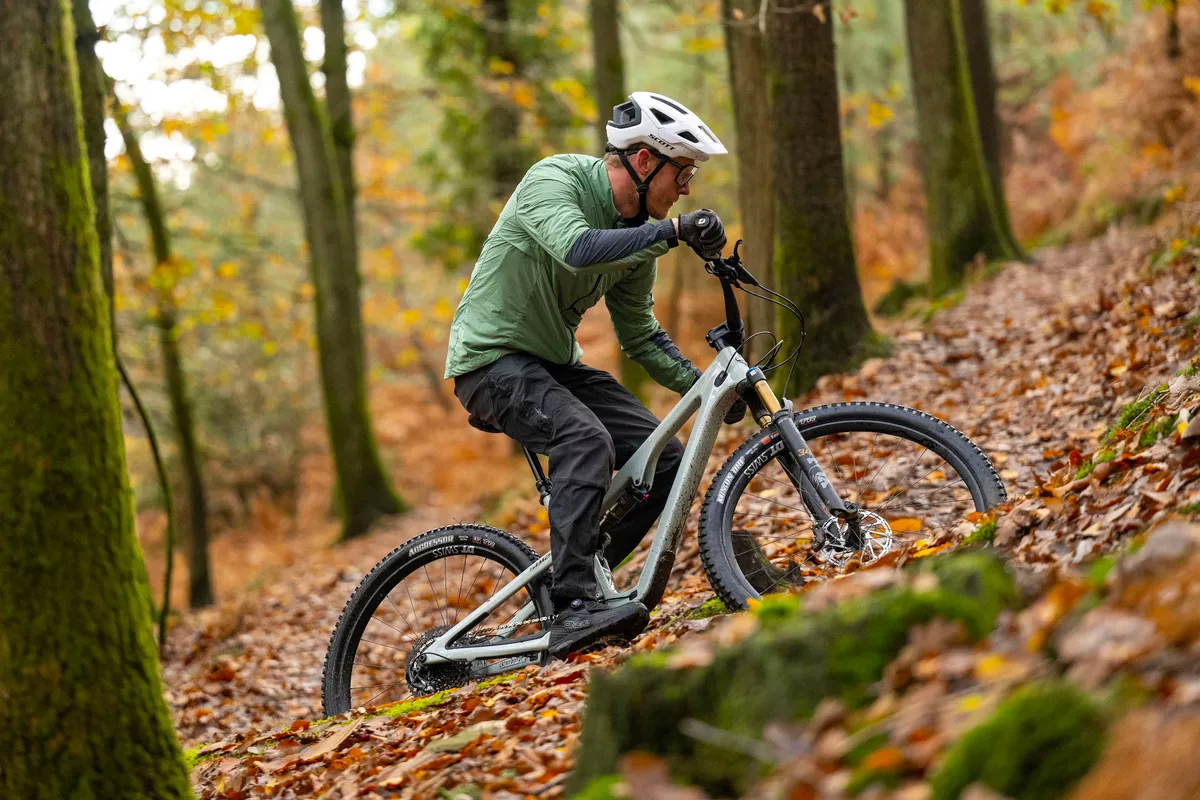
One of the first things I noted when riding the SB120 was just how stable the rear suspension is when riding up hills.
Looking down at the linkage from the saddle, it’s almost static, suggesting the anti-squat figure is relatively high. This results in an incredibly efficient-feeling bike on both smooth and lumpy climbs, because less of your effort goes into squashing the suspension and more towards driving the bike forward.
This gives it a pretty sprightly feeling on harder, smooth surfaces. It's not XC-fast, but it certainly doesn't leave you feeling like you're dragging an anchor behind you.
Of course, when pedalling out of the saddle, pedal bob is present, and when I wanted to ride up smoother climbs in a more aggressive manor, I reached occasionally for the compression switch on the shock, firming it up either in its middle or closed mode.
With the shock slung just below the top tube, reaching the compression dial is easy.

Despite ample stability in the shock on climbs, traction didn’t feel overly compromised (as it might be on a hardtail mountain bike with zero rear-wheel travel).
Steps, rocks and roots could be felt through the saddle, but their edge was muted and the suspension soaks up the edges of trail features, allowing the Aggressor to remain in contact with the ground, and not popping and pinging off obstacles.
Likewise, the bike isn't jarring to ride. There's a smooth balance between bump absorption and solid pedalling that makes the SB120 an impressive climber.
All this is helped by the moderately fast-rolling Aggressor, which doesn't rumble heavily on tarmac.
Its EXO casing helps keep weight low, and it doesn't feel as though the M1700 rims are portly, either.
It was interesting to note the change in the suspension when transitioning from ascents to flatter surfaces.
When the trail flattened, the suspension started to move under pedalling loads, to an extent similar to that I’d expect from an average full-suspension bike.
Presumably, the change in the location of the centre of mass of my weight over the bike, as the pitch of the bike changed, influenced the anti-squat kinematics.
Still, when rolling from trail to trail at a sociable pace, I never felt the need to move the shock into its more damped positions.
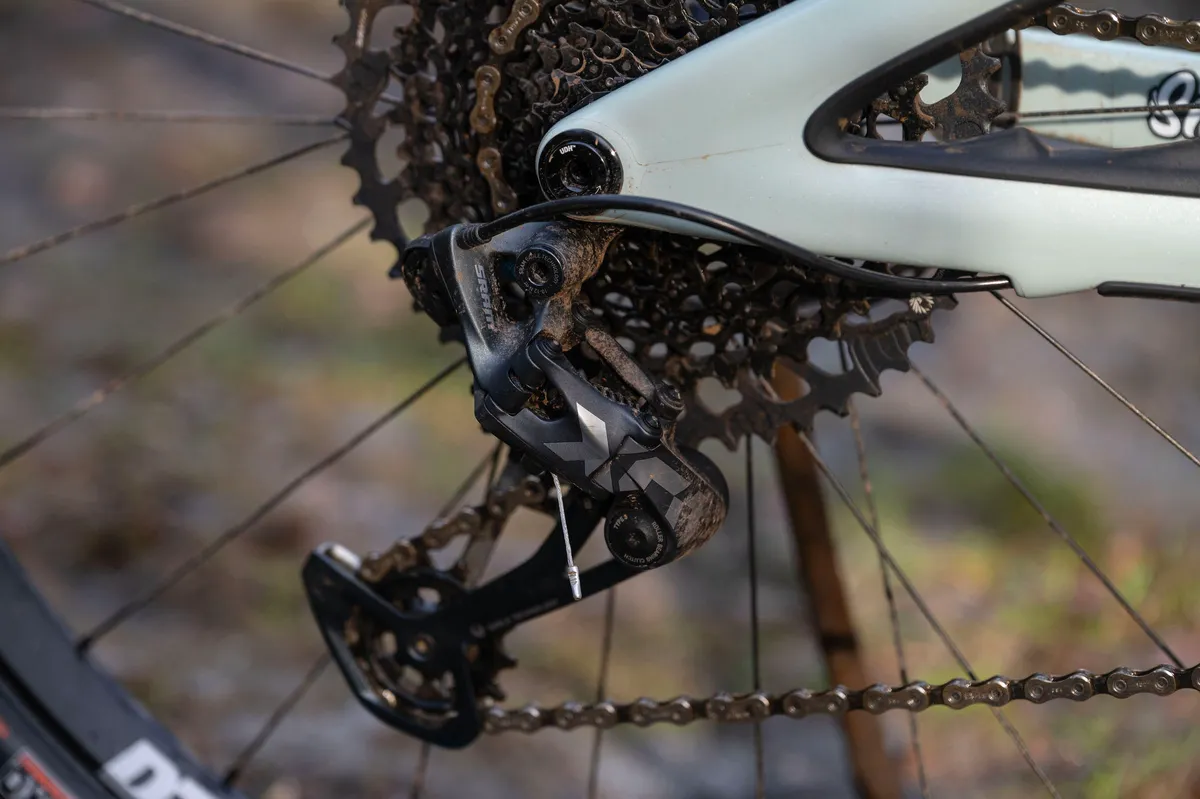
In terms of kit, on the climbs, there's little to report, other than the 30t ring, paired with the 52t sprocket on the cassette, gives an incredibly low gear, ideal for the steepest of pitches.
I found the gear shift a little stiffer than I might have expected, perhaps due to cable routing. From a value perspective I'd hope for better than a GX Eagle drivetrain on a bike costing £8,000 or more – ideally one from the upper reaches of SRAM's wireless AXS groups.
Yeti SB120 T1 descending performance

Don't let the shorter travel figures fool you into believing the T120 is sluggish on the descents. The SB120 delivers its descending performance with personality in spades.
With 11 per cent progression through the stroke, there's enough bottom-out resistance to prevent all but the harshest of landings from clunking through the rear end. But at the same time, it's easy enough to use nearly all the travel on offer – you're rarely left feeling short-changed from the back end.
The suspension isn't the smoothest out there. With 120mm of give, rocks and roots, drops and jumps can be felt fed-back through the pedals. The rear tyre, especially, can skitter and skid across the ground, too, when pushed hard.
This, though, all adds to the SB120 having a really engaging ride quality. It feels fast at crossing ground and it's fun to do so.
It feels as though there’s tons of mid-stroke support – pushing your heels to the ground in corners enables the bike to rip round natural curves, while there’s ample platform to rebound off to pop over trail features.

On jump lines, the SB120 encourages you to pump harder and pull further. It's stable enough at speed to give confidence you're going to make the landing, but nimble enough that you're encouraged to try to tweak the bars, or pull the rear end round in the air – as far as you dare anyway.
On more chunky terrain, the rear wheel's limited travel can catch on bigger square edges, with more feedback through the pedals than you might get from a longer-travel bike.
It's perhaps a complement to the bike, though, that it encourages you to seek out those lines, which traditionally you'd look for on an enduro bike.
When it comes to the corners, the SB120 is a hoot.
It's not that low-slung, or ridiculously slack, either. But it carves a corner deftly, with the Minion's shoulder digging in well.
From one corner to the next, it chops and changes direction easily. Clamp the rear brake on, and the Aggressor's tread breaks traction predictably, aiding a little rear-wheel steering.
In some situations, the spec of the bike can come unstuck.
Maxxis' rubber is well-regarded for good reason, however I was left wishing for chunkier EXO casings, which offer better damping and more puncture protection. On a cold, wet November day, fixing a flat in the woods is low down on my priority list.
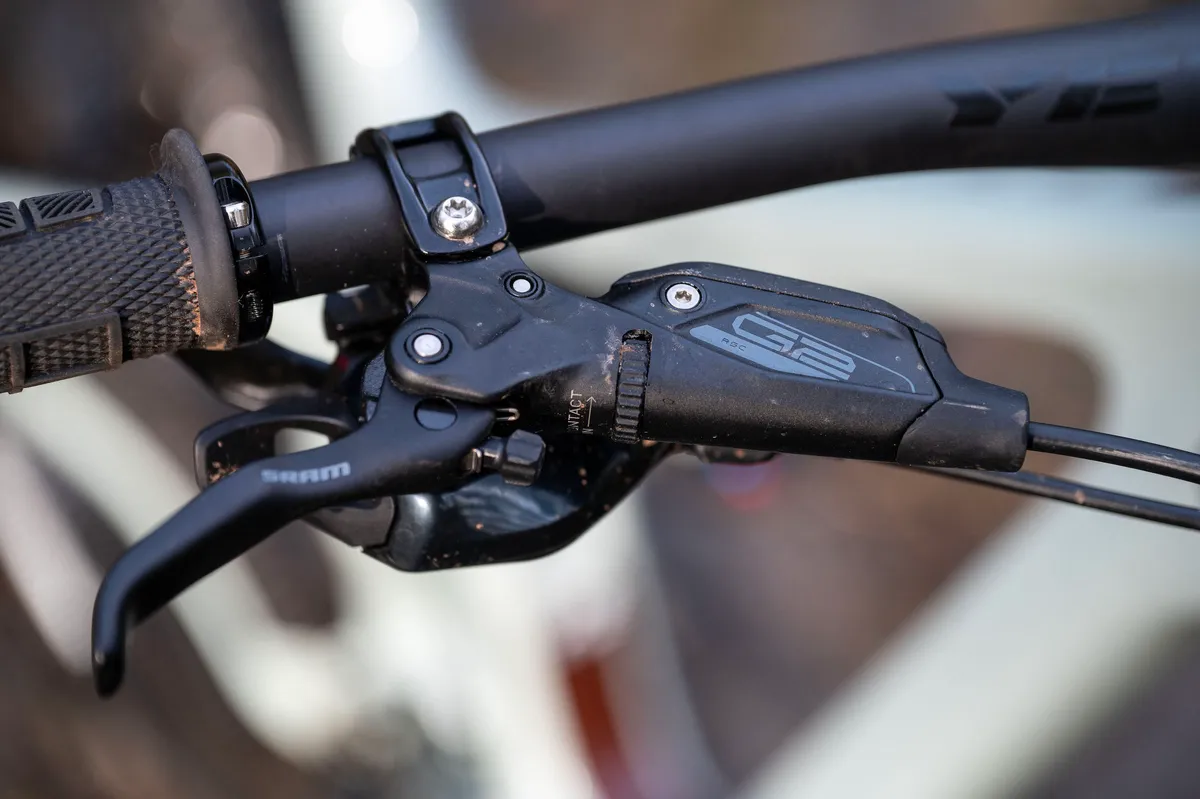
Furthermore, I found the 180mm-rotor SRAM G2 RSC brakes under-gunned on long-ish, rough descents.
I know it's 'only' a 120mm bike, but with aggressive tyre knobs, and geometry that focuses towards descending rather than climbing prowess, I'd like punchier stoppers.
I liked the forks, and the 34, in its 130mm platform, is a fair match for the bike.
The chassis, at 130mm, feels okay – larger riders might want something a touch stouter, such as a RockShox Pike, but I think Yeti picked the right fork.
It's a shame the GRIP2 damper in this smaller fork displays the over-damped feeling of the 36, though. I'd rather be running the compression and rebound damping closer to the middle of the fork's adjustments, rather than right at the fastest end of it all.
Yeti SB120 bottom line

I came away really impressed by the SB120. It's an engaging, fun bike to ride that oozes a cheeky personality.
It climbs well, on a wide range of surfaces, and on descents it blends fast-feeling performance with a capability the shorter travel numbers might not suggest.
It might not be good value, and there are elements of the spec I'd change, but I'll be sad when the SB120 leaves my garage.
Product
| Brand | yeti |
| Price | 8199.00 GBP,8200.00 USD |
Features
| Fork | FOX FACTORY 34 GRIP2 |
| br_stem | BURGTEC ENDURO MK3 35X50MM |
| br_chain | SRAM GX EAGLE |
| br_frame | TURQ Series carbon fiber frame |
| Tyres | MAXXIS MINION DHF 2.5 EXO f / MAXXIS AGGRESSOR 2.3 EXO r |
| br_brakes | SRAM G2 RSC |
| br_cranks | SRAM X1 EAGLE 30T 170MM |
| br_saddle | SILVERADO CUSTOM |
| br_wheels | DT SWISS XM1700 30MM |
| br_headset | CANE CREEK 40 INTEGRATED |
| br_shifter | SRAM GX EAGLE |
| br_cassette | SRAM GX EAGLE 1275 10-52 |
| br_seatpost | FOX TRANSFER 31.6MM / XS-SM: 150MM, MD: 175MM, LG-XXL: 200MM |
| br_gripsTape | ODI ELITE PRO |
| br_handlebar | YETI CARBON 35X780MM |
| br_rearShock | FOX FACTORY FLOAT DPS |
| br_bottomBracket | SRAM DUB BSA 73 |
| br_availableSizes | XS, S, M, L, XL, XXL |
| br_rearDerailleur | SRAM X01 EAGLE |
